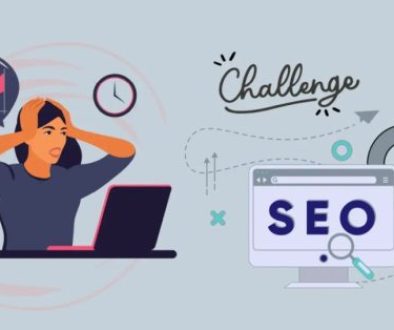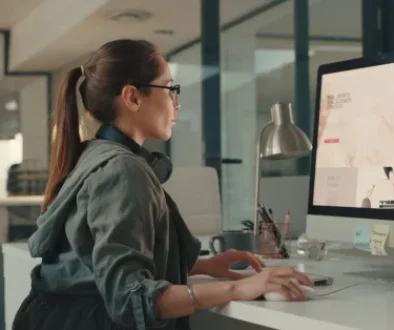The Art and Science of Web Design: Building User-Centric Digital Experiences
In today’s digital-first world, a website is more than just an online presence—it’s a central platform for communication, engagement, and business. Web design sits at the heart of this experience, blending creativity with technical expertise to create functional, aesthetically pleasing websites. Whether you’re building an e-commerce store, a portfolio, or a corporate landing page, thoughtful web design can make the difference between capturing attention and losing it in seconds.
This article explores the fundamentals of web design, modern trends, essential tools, and the importance of user-centered design to create digital experiences that are not only beautiful but also impactful.
Understanding the Foundations of Web Design
Web design encompasses multiple disciplines and skills in the production and maintenance of websites. The core aspects include:
-
Layout and structure: Determining how content is organized on the page.
-
Typography: Choosing appropriate fonts for readability and style.
-
Color theory: Using color schemes that align with branding and user psychology.
-
Visual elements: Incorporating graphics, images, and icons for better communication.
-
Interactivity: Adding animations, buttons, and dynamic content to engage users.
Good web design isn’t just about looking good—it’s about functionality, clarity, and accessibility. The best websites guide users through a seamless journey, from landing on the homepage to completing a goal like signing up or making a purchase.
Why User Experience (UX) Matters
UX design is integral to web design. It’s the process of enhancing user satisfaction by improving the usability, accessibility, and interaction between the user and the product.
A few principles that guide effective UX in web design include:
-
Simplicity: Avoid clutter. Every element should have a purpose.
-
Consistency: Maintain design patterns and navigation across the site.
-
Accessibility: Design for all users, including those with disabilities.
-
Mobile responsiveness: Ensure the website looks and works great on all devices.
-
Speed: Optimize images and code to ensure fast load times.
A website with poor UX will have high bounce rates, regardless of how visually stunning it is.

Current Trends in Web Design
Web design is constantly evolving, influenced by technology and user behavior. Some of the most significant trends in 2025 include:
-
Minimalism and whitespace
Clean, uncluttered designs make it easier for users to focus on content. Whitespace enhances readability and aesthetic balance. -
Dark mode
Dark-themed interfaces are not only stylish but also reduce eye strain and save battery on OLED screens. -
3D elements and immersive visuals
Advanced visuals, such as parallax scrolling and 3D interactions, are being used to create more engaging experiences. -
Micro-interactions
Subtle animations triggered by user actions enhance usability and delight users—for example, button hover effects or animated confirmations. -
AI-powered personalization
Websites are starting to adapt in real-time to user behavior, offering dynamic content, product recommendations, and custom interfaces.
Responsive and Mobile-First Design
As mobile devices account for more than half of global internet traffic, designing for mobile is no longer optional. Mobile-first design means starting the design process with the smallest screen in mind and progressively enhancing it for larger screens.
Key strategies include:
-
Using a flexible grid system (e.g., CSS Grid or Flexbox)
-
Implementing scalable images and fluid typography
-
Prioritizing touch-friendly navigation
-
Keeping load times fast on mobile networks
Responsive design ensures users have a consistent experience regardless of device, which is crucial for engagement and SEO.
Tools of the Trade
Web designers today have access to a wide array of tools that streamline workflows and enhance creativity. Some essential tools include:
-
Design software: Adobe XD, Figma, Sketch – for wireframes and prototypes.
-
Development platforms: WordPress, Webflow, and Shopify – for building websites without deep coding knowledge.
-
Code editors: Visual Studio Code, Sublime Text – for hands-on coding.
-
Version control: Git and GitHub – for collaborative development and backups.
-
Performance tools: Google PageSpeed Insights, Lighthouse – for testing speed and usability.
Choosing the right tools depends on the project scope, team size, and individual expertise.
SEO and Web Design: A Crucial Pair
Search Engine Optimization (SEO) and web design must work hand in hand. An attractive website is useless if users can’t find it.
SEO-friendly web design practices include:
-
Semantic HTML for better indexing
-
Optimized image sizes and formats
-
Mobile responsiveness
-
Fast page loading speeds
-
Proper use of heading tags (H1, H2, etc.)
-
Clean URL structures and sitemaps
Additionally, good UX can indirectly boost SEO metrics by reducing bounce rates and increasing time on site.
The Importance of Branding in Web Design
Your website is a digital reflection of your brand. Consistent branding across your site builds trust and recognition.
Effective branding elements include:
-
Logo placement: Usually top-left corner, clickable to the homepage
-
Color palette: Consistent with other marketing materials
-
Typography: Reflective of your brand’s tone (professional, playful, luxurious)
-
Voice and messaging: Consistent across all content and CTAs
-
Imagery style: Whether you use custom illustrations, stock photos, or lifestyle photography, they should align with your brand.
A well-branded website creates emotional connections and encourages loyalty.
Web Design Mistakes to Avoid
Even experienced designers make missteps. Common pitfalls include:
-
Overloading with animations that slow down the site
-
Poor contrast between text and background, reducing readability
-
Inconsistent navigation, making it hard for users to find content
-
Ignoring accessibility standards, such as proper alt text and keyboard navigation
-
Not testing across browsers/devices, leading to inconsistent experiences
Avoiding these mistakes ensures your website is professional, accessible, and user-friendly.

Conclusion: Web Design as a Strategic Asset
Web design is not just an art—it’s a strategic asset for businesses and creators. A well-designed website attracts visitors, keeps them engaged, and converts them into customers or subscribers. As technology continues to evolve, web designers must stay current, adaptive, and user-focused.
Whether you’re a business owner investing in a new website or an aspiring designer building your first project, remember: great design starts with the user. Prioritize usability, keep the design clean and purposeful, and always be ready to iterate based on feedback.
In a digital landscape saturated with choices, your website is your most powerful first impression—make it count.




